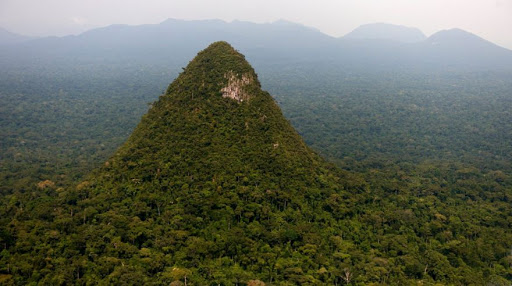
The new road is under study by the National Department of Transports Infrastructure (DNIT), a body linked to the Ministry of Infrastructure responsible for federal roads. The goal is to open a 152-km stretch from the city of Cruzeiro do Sul, in Acre, to the Brazilian border with the neighboring country. On the Peruvian side, the road would connect with the city of Pucallpa.
The government claims that the project, which would extend the BR-364 highway, one of the largest federal highways in the country, would be a new route for the flow of production through the Pacific Ocean. In September, Foreign Minister Ernesto Araújo attended an event to address the issue and said that the Itamaraty is working to expedite the integration plan.
There is currently another route linking Brazil and Peru. The Pacific Road from Rio Branco (AC) was completed in 2010 and provides access to the southern region of Peru. However, recent surveys show that the flow of cargo in the region is still limited.
In addition to diplomatic nods, experts say the new project would still have to address environmental issues, particularly the impact on indigenous lands. There are three demarcated lands along the route. Two of them – Nukini and Jaminawa Land of Igarapé Preto – are located 32 kilometers away from the planned route. There is also a third, the Poyanawa indigenous land, which is close to the shoulder, at only 1.5 kilometers from the planned route.
If direct impacts to the indigenous are resolved, the project will then need to secure an environmental license to cut down approximately 130 kilometers of area covered by virgin forest and cross dozens of rivers. After this, a final stretch of another 22 kilometers is still to be resolved: crossing the Serra do Divisor National Park, a fully protected federal conservation unit, where it is forbidden by law to undertake any type of small or medium sized work. Studies show that the new road would cut the park in half, up to the border with Peru.
Studies by IBAMA (Brazilian Institute of the Environment and Renewable Natural Resources) and the Chico Mendes Biodiversity Institute (ICMBio) show that the federal park region is considered one of the areas with the greatest biodiversity in the Amazon, with the presence of several rare tree species, such as mahogany, laurel, virola and cherry.
Congress
As the construction of a road within this area is forbidden, a bill seeking to change the national park’s classification is currently in Congress, converting part of its territory into an area of environmental preservation (APA). This would enable a much more flexible classification of that part of the territory, thereby allowing tractors to move ahead.
Reported by federal deputy Mara Rocha, bill 6.024/2019 has been on hold since last year. According to Senator Márcio Bittar, an advocate of the opening of the road, another alternative would be to authorize the crossing of a “park road” within the federal unit. He claims that when the park was created, a road at the site was considered at some point. “Acre is a state born with its back to the right ocean. It is facing the wrong direction,” Bittar said, stating that the route to the Pacific Ocean would provide social and economic benefits to the region’s residents.
The Ministry of Infrastructure would not comment on the bill’s development. In a note, the DNIT stated that “it is currently working on the drafting of the Term of Reference for contracting the project”. “Therefore, the detailed extension of the federal highway is not yet available. It will be defined in the development stage of the basic/executive projects”.
Source: O Estado de S. Paulo

